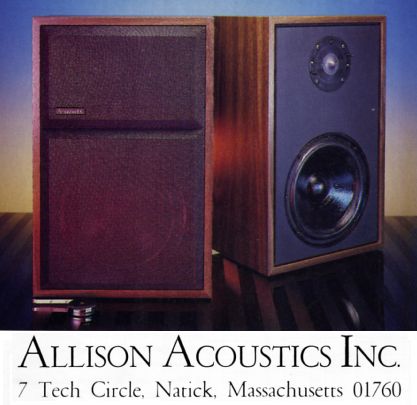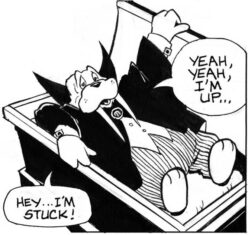Stephen Colbert tackles the football playing representative of Pennsylvania’s 4th Congressional district.
Year: 2007
Audio Files
While transferring a song from an LP, I watched the graphical decibel meter. While finding the maximum recording level I couldn’t help but notice how dynamic the recording is.
I’ve seen this before with certain records. The overall sound level can seem low, because the loud parts would cause distortion if the quieter parts were made louder. But there are ways to deal with this, typically called “normalize levels” or something similar.
But the funny thing is, songs on CD often don’t have this problem, because it seems their levels have already been normalized. That means their dynamic range has been reduced.
One of the advantages first touted for CD was its greater dynamic range compared to LP. But my impression of CD sound is that everything is made to sound loud. So much for dynamic range. This is certainly true of more recent releases, where the expectation is the music will be heard on an iPod or MP3 player.
The audio player below has the song that got me marveling yet again at how good some records still sound. This is “Ain’t Superstitious,” from Jeff Beck’s Truth, with Rod Stewart on vocals. I did nothing to eliminate pops or clicks. No equalization or loudness adjustment. The bass and drums take this to the volume input limit, yet the overall output seems low compared to most CD rips.
I bought this record for $1.50 at a pawn shop in Westfield during my DJ days, many years ago. The track is at the end of the side, where the phenomenon known as “groove compression” occurs, reducing the maximum level of loudness and the bass potential. So this recording has a lot going against it, and yet it sounds like this ……..
[audio:http://www.dograt.com/Audio/JAN07/AintSuperstitious.mp3]….. and while we’re tripping out here, let’s listen to the first track of side 1. The first half of a side is where vinyl tends to sound its best. Beck and Stewart redid the Yardbirds’ song, “Shape of Things.” I’m hearing some things in here that seem to have perhaps been influential on Black Sabbath, but the overall effect helps to explain why the Beck-Stewart team didn’t hit it big the way Jimmy Page and Robert Plant did.
[audio:http://www.dograt.com/Audio/JAN07/ShapeofThings.mp3]Wii Wiinner!
A year ago, Nintendo was the long-shot underdog of game consoles, but my son Eric insisted that the Nintendo Revolution (as it was known then) would be a winner. And he was right. The more I see of this product, the more impressed I am by it.
Wii Web access is done via WiFi. There are various channels dedicated to a single feature, including weather and, starting yesterday, news. But there’s also a customized version of the Opera browser.
I’ll try to get an A/V capture of the Wii while it’s browsing my blog. Everything except the video player seems to work. YouTube videos play pretty well, so I’ll assume my Flash player is incompatible with Opera. Eric has just used the Wii to enter a comment. Click here to see.
Al-vinnnnnnnnnnnn!

What? You thought we were done with Ross Bagdasarian and the Chipmunks?? Bwaa hah ha! No way.
“Alvin’s Harmonica” is from 1959. The first cut on the audio player is the song as it was released. For the second take I was going to isolate the chipmunk voices where possible, slow them down, then splice them back in. Well, somebody has already done it! I don’t know who did this, but he saved me a lot of work.
[audio:http://www.dograt.com/Audio/JAN07/AlvinsHarmonica.mp3,http://www.dograt.com/Audio/JAN07/AlvinsHarmonicaSLOW.mp3]Oh Allison … His Ears Were True

I’m in my second round of physical therapy for a bad ankle, worn out by more than 30 years of running. The place I’m going to happens to be around the corner from 7 Tech Circle, in Natick, MA. This is an address that was familiar to me nearly 30 years ago. It was the original home of Allison Acoustics. 7 Tech Circle is a modest building, as seen in this aerial photo.

 I own two pairs of Allison loudpeakers — the Model 3, purchased in 1979, and the LC-110, that I bought in 1988. Both pairs are still working perfectly. Roy Allison isn’t a household name like Amar Bose, but he is a legend in audio circles, especially in the Boston Area.
I own two pairs of Allison loudpeakers — the Model 3, purchased in 1979, and the LC-110, that I bought in 1988. Both pairs are still working perfectly. Roy Allison isn’t a household name like Amar Bose, but he is a legend in audio circles, especially in the Boston Area.
Before starting his own company, Allison designed speakers for Acoustic Research in Cambridge, MA. Motown Records went through many pairs of AR3 speakers when monitoring and mixing recordings in the 60’s.
Allison speakers sound very open and natural, favoring dispersion over detail, so they aren’t ideal for punchy studio recordings. But their virtues are immediately apparent to anybody who is familiar with live Classical music.
 Besides having an excellent ear for neutral sound reproduction, Roy Allison is a true gentleman. He helped a competitor, Andy Kotsatos, start the still-extant company Boston Acoustics. (I also own a pair of Boston Acoustics A40 speakers, purchased in 1983.) Allison was put out of business during the recession of ’89-’95 in Massachusetts, when his bank called in his loans. Those were tough times around here, believe me, while the minicomputer industry was in its death throes, before the Internet boom saved us.
Besides having an excellent ear for neutral sound reproduction, Roy Allison is a true gentleman. He helped a competitor, Andy Kotsatos, start the still-extant company Boston Acoustics. (I also own a pair of Boston Acoustics A40 speakers, purchased in 1983.) Allison was put out of business during the recession of ’89-’95 in Massachusetts, when his bank called in his loans. Those were tough times around here, believe me, while the minicomputer industry was in its death throes, before the Internet boom saved us.
Roy Allison regrouped and formed a new company called RDL Acoustics, but it didn’t last long. Today he’s retired in Florida, but he’s lent his name to a new line of speakers. They sell replacement drivers for the original series, and every so often I tell myself I should buy a pair of woofers — just in case!
Still Blogging
Western Massachusetts blogger Mike Dobbs has posted a couple more ultra-high quality scans of stills from ultra-low quality movies. Click here to go to the page, and when you get there click the pictures for the full-size images. Mike is one of two people I know who are into watching … blecch! … professional wrestling.
